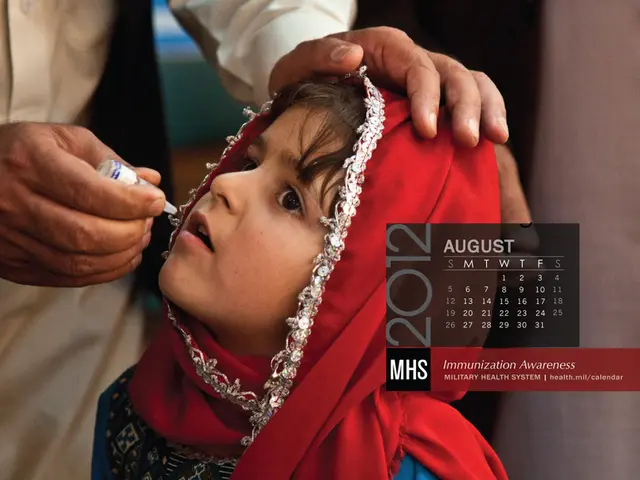Distinguishing between age spots and skin cancer: Identifying the variations
Life's Little Surprises: Age Spots vs Skin Cancer
As we age, our skin may undergo some changes that can resemble certain health issues, like skin cancer or precancerous growths. However, understanding the key differences between these conditions can help you spot potential problems and seek medical advice when necessary. This article will delve into the distinctions between age spots and skin cancer.
Sun's Playground
Age spots and skin cancer often appear on the same areas of the body that receive the most sun exposure, such as the face, hands, shoulders, and arms. Both conditions manifest due to UV radiation damage, whether from the sun or tanning beds.
Age Spots: Nature's Artwork
Age spots, also known as liver spots or solar lentigines, are harmless, flat, and round or oval patches that appear darker than the surrounding skin. They usually present in yellow, brown, or gray tones and have clearly defined borders. Unlike skin cancer, age spots are not harmful and do not require treatment.
Skin Cancer: A Concerning Counterpart
Skin cancer is a serious health issue that forms when skin cells are damaged due to UV radiation or other factors. Unlike age spots, skin cancer can spread to other parts of the body and is potentially life-threatening. The three most common types of skin cancer are basal cell carcinoma, squamous cell carcinoma, and melanoma. Another precancerous growth worth mentioning is actinic keratosis.
Actinic Keratosis: A Warning Sign
Actinic keratosis appears as rough, scaly, crusty, or sandpaper-like patches or bumps on sun-exposed skin. These growths can sometimes resemble age spots but differ by texture and scale. Actinic keratosis is a precancerous condition, so early intervention is crucial to prevent it from developing into squamous cell carcinoma.
Symptoms and Diagnosis
While age spots are usually asymptomatic, actinic keratosis and skin cancer may exhibit various symptoms such as roughness, itching, tenderness, and bleeding. Diagnosis typically involves physical examination, during which the doctor assesses the appearance, texture, and placement of the spots. If needed, a skin biopsy may be performed to confirm the diagnosis.
Treatment
Treatment for age spots is usually optional, primarily for cosmetic purposes. Options include topical bleaching agents, chemical peels, laser therapy, or cryotherapy. Actinic keratosis treatment is vital to prevent it from progressing to skin cancer, and common treatments include cryotherapy, topical chemotherapeutics, photodynamic therapy, laser therapy, or curettage. Skin cancer treatment depends on cancer type and stage but may involve surgical excision, radiation therapy, topical chemotherapy, or systemic therapy for advanced melanoma. Seeking early diagnosis and treatment is essential to prevent spread and complications.
Age Spots vs Skin Cancer: Know the Difference
Age spots, actinic keratosis, and skin cancer may appear similar, but recognizing their unique characteristics can help you know when to seek medical attention. Regular skin self-examinations and consulting a doctor about any changes or unusual symptoms can help ensure early detection and treatment, improving health outcomes.
- Seniors, be aware that skin cancer and other skin conditions like melanoma and actinic keratosis often occur on sun-exposed areas such as the face, hands, shoulders, and arms.
- Age spots are typically harmless, flat, and round or oval patches that appear darker on the skin, while skin cancer can be a serious health concern requiring medical attention.
- In oncology, skin cancer is a disease that can develop due to UV radiation damage and has the potential to spread to other parts of the body. Dermatologists monitor patients for various health-and-wellness conditions, including skin cancer and its precancerous growths.
- A vital aspect of skin-care frequently discussed in medical-conditions discussions is the difference between age spots and other skin concerns like actinic keratosis or melanoma, given the importance of early detection and treatment.
- People should be knowledgeable about the distinctions between age spots and skin cancer, seeking medical help when in doubt, as early diagnosis and treatment can significantly impact health-and-wellness outcomes.








